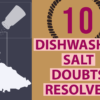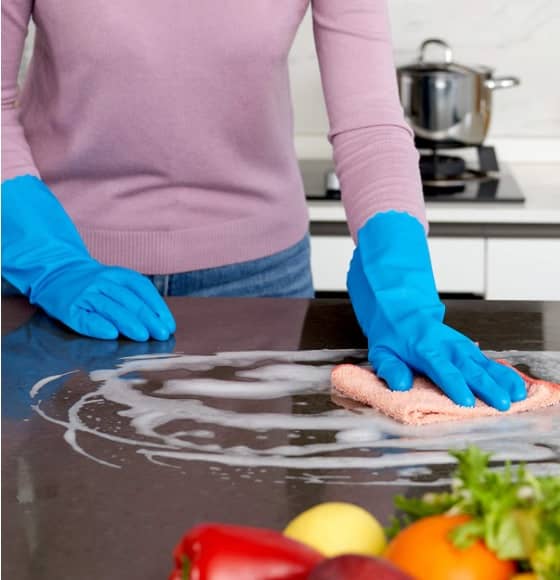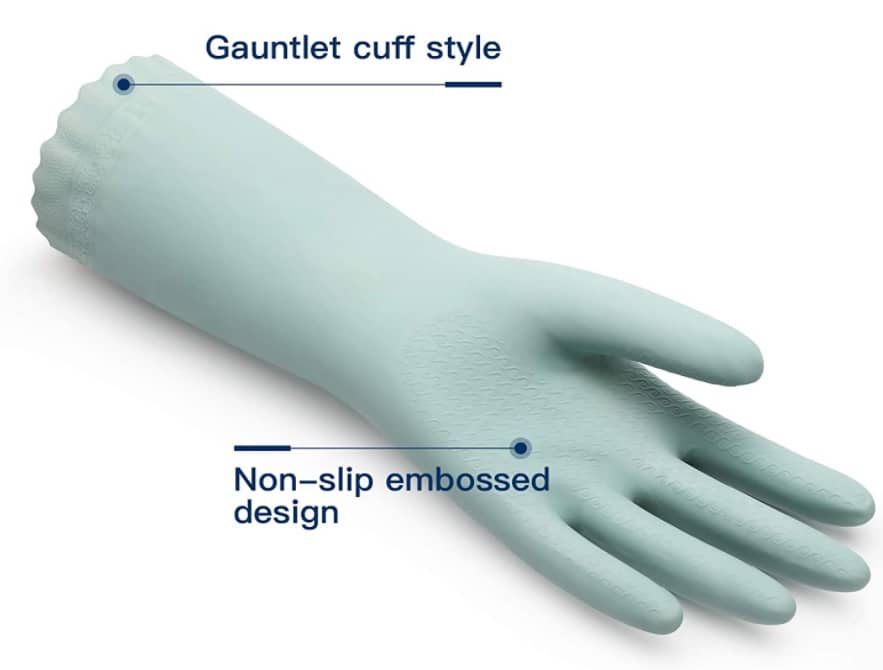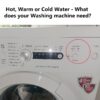Rinse aid is a very helpful invention and an effective thing to use with your dishwasher if it is not chemical-pact.
It is a surfactant that reduces the surface tension of the liquid.
Thus helps in removing excess water from the utensils offering spotless drying.
Every dishwasher has got a container for rinse aid, which should be filled in an appropriate amount.
Yes, “too much rinse aid” is a thing.
Like too much dishwasher detergent can cause a lot of trouble, too much rinse aid may ruin your dishwasher also.
What happens when we use too much rinse aid?
Excess dishwasher rinse aid can cause foaming, which might clog the dishwasher outlet, filter and often affect your septic tank.
Also, the dishes may come out having grease. The excess rinse aid may create a layer of cloud or film on your glassware mainly. But this is an extreme situation – which had happened to me.

This does not happen because of my dishwasher detergent, I can assure you that. I am using Lemi Shine powder and gel combo for many years for my glassware and they always come out spotless. I don’t know why that day I thought of putting rinse aid, which I never used before. Because the detergent alone is enough.
After switching on the dishwasher, it strike me – I may have used too much rinse aid.
The cycle ended with foams and cloudy glasses. 🙁
Thus it is necessary- you take precautions and only add enough rinse aid in the dishwasher. Here, in this article, we will have a detailed discussion on –
- How much rinse aid is enough?
- How to avoid putting more than enough rinse aid?
- How to fix the dishwasher after too much rinse-aid mayhem!
Read: EWG rated best safe and natural dishwasher detergents
How much rinse aid is enough?
To know how much dishwasher rinse aid is enough, you need to understand two situations very well.
Situation 1:
In popular dishwasher brands like the Bosch or Kitchenaid, the companies recommend filling the rinse aid counter all the way up or till the indicator indicates “full”.
Then after one cycle, judging by the dishes if you feel like they are not drying properly or your cookware has white film then change the factory setting of the rinse aid to a higher level.
Now, this steps seem fairly easy then how one can put too much rinse aid?
The full indicator is often for a fully loaded dishwasher. Clearly, if the load is half, some smart dishwashers can detect that and only use the required amount of rinse aid. However not everybody has a smart machine.
Solution:
Little is always more. Every dishwasher is different, so there is no thumb rule of the exact amount of dishwasher drying aid. Start with putting a little amount and see if it works. If it doesn’t increase the amount a bit more. Trial and error is our best friend when using a dishwasher. This way you will find the exact measurement.
Situation 2:
If you are using dishwasher pacs/tablets they often come with rinse aid, salt, and detergent combo. Some tablets only have detergents but for some reason, they aid in drying too and keep the dishes streak-free.
For the first type of tablets you know you don’t need a rinse aid. But for the later, you will put rinse aid naturally.
Now, not every time, it will result in supermassive suds, however, there are few but not negligible chances, it will become too much rinse aid.
The reason being-
this particular type of pacs or tablets (mainly the natural ones) have ingredients like sodium aluminosilicate or sodium polyaspartate.
Both of which are naturally occurring substance and biodegradable. The first one helps in keeping things dry and the second one is a synthetic anti-filming agent. Combination of these two make the dishwasher detergent more impactful in keeping the dishes stain-free.
Now, this is a good thing. But few dishwasher detergent brands use them and similar types of these ingredients in huge quantities. This creates the issue of too much rinse aid when people like you and me just simply follow the instructions.
Who has time to research so much just to clean the dishes? Also, companies don’t always disclose all of their ingredients in the name of trade secrets.
So, how to avoid putting more rinse aid?
If you are just reading this section of the article only, please read the previous portion to understand the connectivity.
You want to use natural dishwasher tablets but don’t know if putting rinse aid with it, is a good idea or not, in that case, do this –
You don’t have to read the ingredient list or do extensive research. Just don’t use rinse aid for the first two-three loads. Often with natural detergents, it takes at least three days to judge their performance if you are using one for the first time.
After three cycles, you can see if the detergent is working or not.
If the detergent is working and the dishes are streak-free, skip the rinse aid or vice versa.
Experimenting with less is key. So, if you need to put rinse aid, don’t fill the entire container.
Smart dishwashers are exceptions. They will not run with the rinse aid indicator pointing full. These dishwashers will not use excess dishwasher rinse aid too.
Read: Best dishwasher tablets brands
How to clean a dishwasher after too much rinse-aid mayhem?
The foaming or rinse-aid mayhem might not need any repair or professional care it can be clean easily.
The foremost thing is to stop the cycle as soon as you see the foam or overflowing. Switching off the cycle will result in drainage of water so, you won’t have any spilled over the floor.
Once you stopped the cycle and water is drain remove the lower rack, and if you find thick foam add some salt over to break it down.
Now take a mop or towel and clean the foam and water thoroughly with a cloth. The foam might be thick, which will take some more effort but will be clean. Also, clean the outer part of the dishwasher.
Once the dishwasher is clean, place the rack and run a rinse-only cycle. If you see a little or more foam, repeat the step.
If the problem persists, check if the rinse aid dispenser cap is properly closed or any leakage in the dispenser.
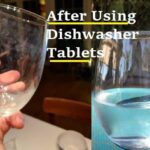








![[Best Dishwasher Detergent] to Prevent Etching Your Glassware etchproof](https://dishwashingpro.com/wp-content/uploads/2020/06/etchproof-100x100.png)

